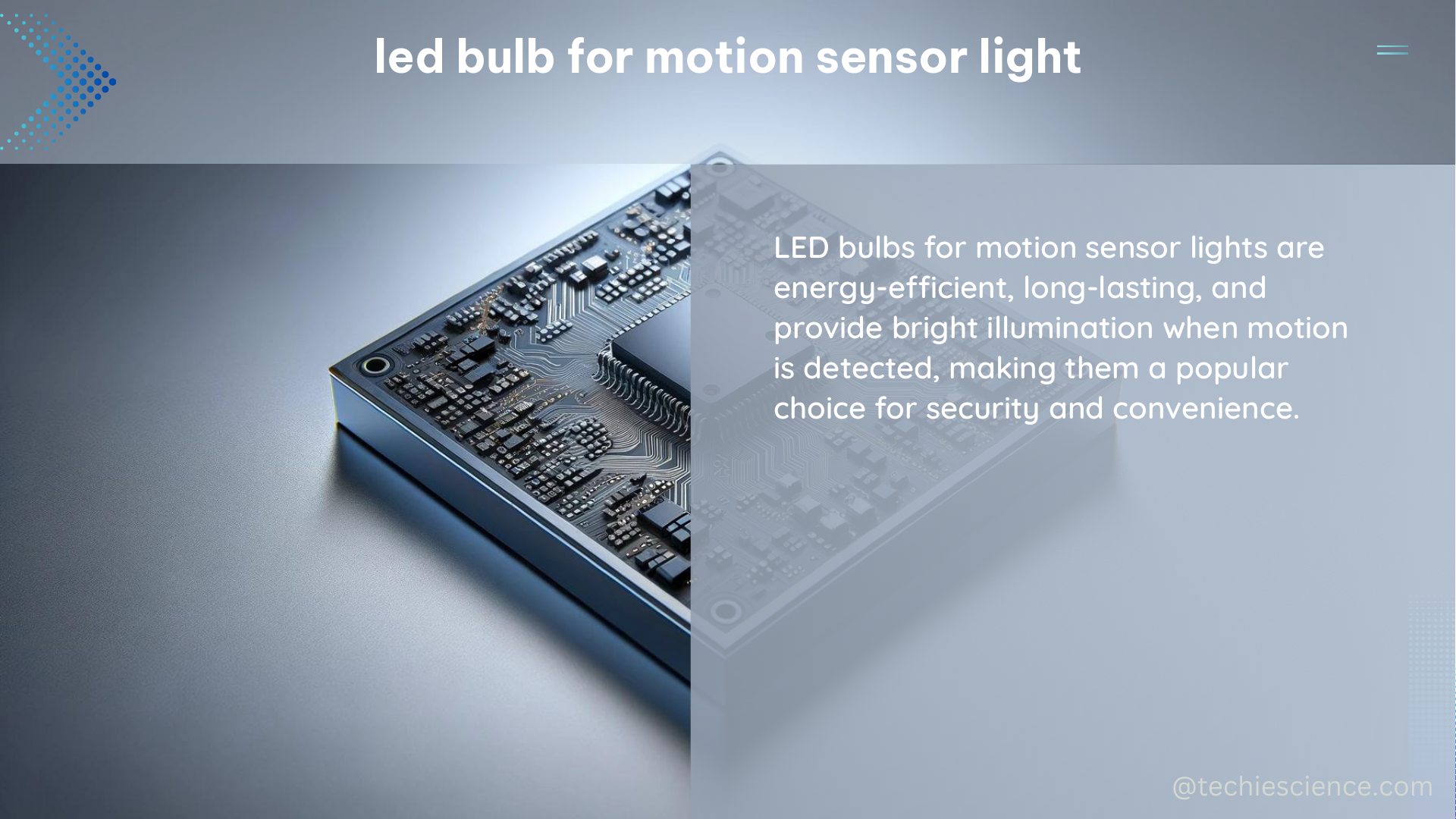LED bulbs for motion sensor lights are a popular choice for both residential and commercial applications due to their energy-efficiency, cost-effectiveness, and convenience. These lighting fixtures use LED technology and a motion sensor to automatically turn on and off, providing illumination when needed.
Lumen Output: The Brightness Factor
The lumen output of an LED bulb is a crucial factor to consider when selecting a motion sensor light. Lumen output measures the total amount of light emitted by the bulb. For most residential motion sensor light applications, a lumen output of around 300 to 500 lumens is typically sufficient. However, for larger spaces or commercial settings, you may need a higher lumen output, such as 600 to 1000 lumens.
Color Temperature: Warm or Cool?

The color temperature of an LED bulb is measured in Kelvin (K) and ranges from warm white (around 2700K to 3000K) to cool white (around 5000K to 6500K). The color temperature you choose will depend on your personal preferences and the specific application. Warm white light creates a cozy, inviting atmosphere, while cool white light is more energizing and suitable for task-oriented areas.
| Color Temperature | Appearance |
|---|---|
| 2700K – 3000K | Warm White |
| 4000K – 5000K | Neutral White |
| 5000K – 6500K | Cool White |
Motion Sensor Range: Detecting Movement
The motion sensor range is the distance within which the sensor can detect movement and activate the LED bulb. For most residential applications, a motion sensor range of around 10 to 15 feet is typically sufficient. However, for larger spaces or commercial settings, you may need a motion sensor with a longer range, such as 20 to 30 feet.
Market Growth and Trends
The global LED motion sensor lights market is expected to grow significantly in the coming years. According to a recent market report, the market size was valued at USD million in 2022 and is expected to expand at a CAGR of % from 2023 to 2028, reaching a market size of USD million by 2028. This growth is driven by the increasing demand for energy-efficient and cost-effective lighting solutions, as well as the growing adoption of smart home technologies.
Measuring Light Output and Intensity
When it comes to measuring the light output and intensity of LED bulbs, there are several tools and techniques available. One such tool is the USB spectrometer from OceanOptics, which can be used to measure the wavelength and intensity of colored LED lights in a laboratory setting. Additionally, various types of light sensors and photodetectors can be used to measure the intensity and brightness of LED lights in real-world applications.
DIY Installation and Maintenance
When installing LED bulbs for motion sensor lights, it’s important to note that some motion sensor light switches require a minimum load of 60 watts to function properly. However, many LED bulbs have a much lower wattage, which can cause issues with the motion sensor. To overcome this, some manufacturers recommend using a resistor or a capacitor to simulate a higher load, or using a motion sensor switch that is specifically designed for use with LED bulbs.
Conclusion
LED bulbs for motion sensor lights offer a range of benefits, including energy-efficiency, cost-effectiveness, and convenience. When selecting these lighting fixtures, it’s important to consider factors such as lumen output, color temperature, and motion sensor range to ensure that they meet your specific needs. With the growing market and advancements in measurement techniques, LED motion sensor lights are becoming an increasingly popular choice for both residential and commercial applications.
References:
– LED Motion Sensor Lights Market Size and Share Analysis by 2030. (2023). Retrieved from https://www.linkedin.com/pulse/led-motion-sensor-lights-market-size
– How can I easily measure LED light nm and intensity in the lab? (2016). Retrieved from https://www.researchgate.net/post/How-can-I-easily-measure-LED-light-nm-and-intensity-in-the-lab
– New LED Bulb issues – Mike Holt’s Forum. (2016). Retrieved from https://forums.mikeholt.com/threads/new-led-bulb-issues.130685/
– Motion Sensing Light Switch Requires Minimum Load of 60W. (2020). Retrieved from https://diy.stackexchange.com/questions/211102/motion-sensing-light-switch-requires-minimum-load-of-60w-can-i-use-with-leds
– Light Sensors: Units, Uses, and How They Work – enDAQ Blog. (2022). Retrieved from https://blog.endaq.com/how-light-sensors-work

The lambdageeks.com Core SME Team is a group of experienced subject matter experts from diverse scientific and technical fields including Physics, Chemistry, Technology,Electronics & Electrical Engineering, Automotive, Mechanical Engineering. Our team collaborates to create high-quality, well-researched articles on a wide range of science and technology topics for the lambdageeks.com website.
All Our Senior SME are having more than 7 Years of experience in the respective fields . They are either Working Industry Professionals or assocaited With different Universities. Refer Our Authors Page to get to know About our Core SMEs.